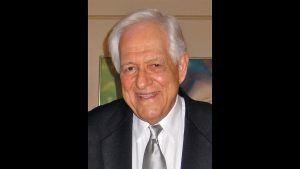The Human Body Can Actually “Runneth Over”
Published October 27, 2016
When Dr. Kenneth Cooper published his first bestseller, Aerobics, 44 years ago, he simultaneously introduced a new word into the Oxford English Dictionary. This book, translated into 41 languages as well as Braille, propelled Dr. Cooper to the forefront of the pro-exercise movement. In fact, he has been credited with motivating more people to exercise for health benefits than any other single individual. As the good doctor puts it, “It is easier to maintain good health through proper exercise, diet, and emotional balance than to regain it once it is lost.”
Indeed, the Cooper philosophy has been thoroughly studied, researched, and validated in countless labs and fitness facilities around the globe. While there is any number of ways to stay active, it seems that running has been one of the most popular forms of aerobic exercise through the ages. Being able to power through miles and miles, eliciting endorphins and achieving that ultimate quest, the “runner’s high,” has mass appeal for athletes both young and old.
While most recreational runners have a healthy respect for the limits of the human body, and set reasonable and appropriate goals for themselves based on their age and level of fitness, there are always going to be those individuals who feel that if a little is good, then more must certainly be better. These are the hardy souls who engage in ultra-marathon events, or enter multiple marathons in a single season. Interestingly, the medical research does not necessarily support that same adage.
Let’s first explore the positive benefits of running as a form of aerobic exercise. A research study conducted out of Stanford University’s School of Medicine tracked 500 runners between the ages of 50 and 60, over the course of 20 years. The results at the conclusion of the study indicated that elderly runners experienced fewer disabilities, enjoyed a longer span of active living, and were 50 percent less likely to suffer an early demise when compared to non-runners of the same age. As an added benefit, the study found that running was also associated with fewer early deaths from cancer, neurological disease, infections and other causes.
Quite honestly, these findings came as a surprise to many scientists, who originally postulated that vigorous exercise on the part of older adults would lead to orthopedic injuries and permanent damage later in life. Clearly that was not the case. Dr. James Fries, the lead author on the Stanford study, wrote another paper for the American Journal of Preventive Medicine, demonstrating that running was not associated with greater rates of osteoarthritis or total knee replacements in their elderly runners.
This is indeed good news for avid adult runners who intend to continue enjoying their sport for many years to come. In fact, a study conducted jointly by researchers from the University of South Carolina and the Ochsner Health System in New Orleans, LA, analyzed data on the link between running and cardiovascular-related deaths in a group of 53,000 adults between the ages of 20 and 100. The study concluded that the runners had about a 20 percent lower mortality rate than the non-runners. There was a caveat, however: it appeared that running did in fact lower one’s risk for mortality, provided the individual did not exceed 20 miles a week, or run more than two to five times a week. As the doses of frequency, distance and speed increased, the runners seemed to lose their advantage over those who engaged in less running.
Now that the scientific community’s eyes had been opened to the fact that more is not necessarily better, additional studies began to appear in journals. A study published in the June issue of the Mayo Clinic Proceedings revealed that the effects of extreme endurance training, such as that engaged in by marathon runners, triathletes, professional cyclists, and ultra-marathon runners, could actually lead to long-term damage of the heart muscle. According to Dr. James O’Keefe, lead author of the second study and a professor of Medicine at the University of Missouri and Saint Luke’s Hospital in Kansas City, Mo., “There’s probably nothing better a person can do for themselves for their long-term health than daily exercise. But if you train more than the cardiovascular system is designed to handle, you can tax your heart and do damage.”
While this news may not come as a surprise to some readers, it certainly will ignite the fury of our ultra-marathon fans. However, pointing out the potential pitfalls can help alleviate serious health problems. A study published in the European Society of Cardiology revealed that after completing four endurance races of varying lengths, seasoned athletes experienced diminished right ventricular function, increased levels of cardiac enzymes (markers for cardiac injury), and scar tissue on the heart muscle.
It looks like, yet again, moderation is the key to most things in life. Participate, recreate, and celebrate…but do so intelligently!
























